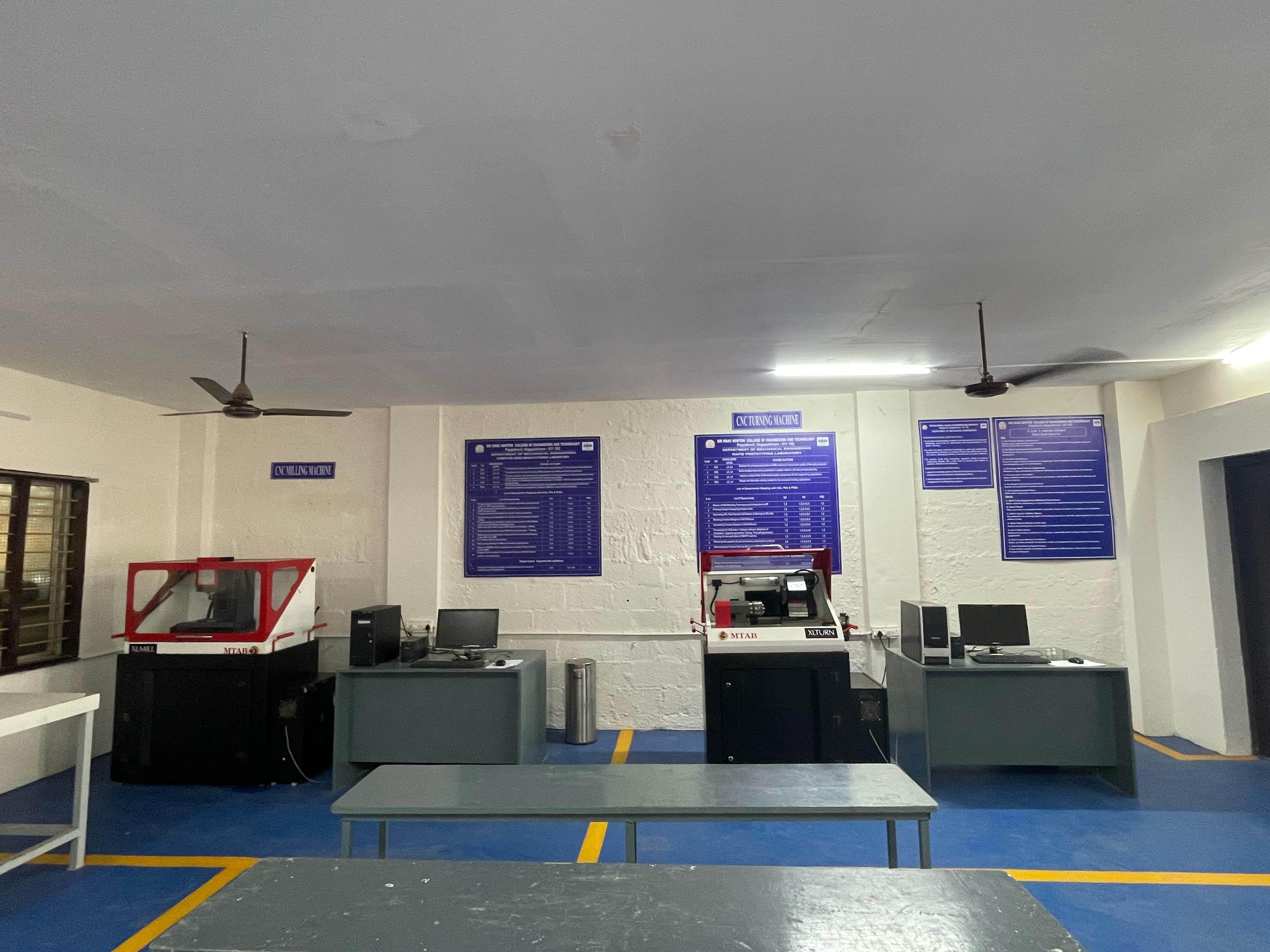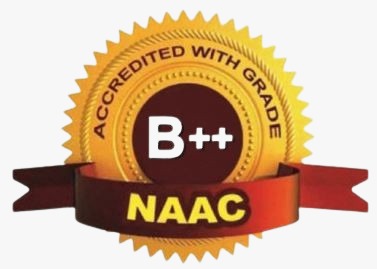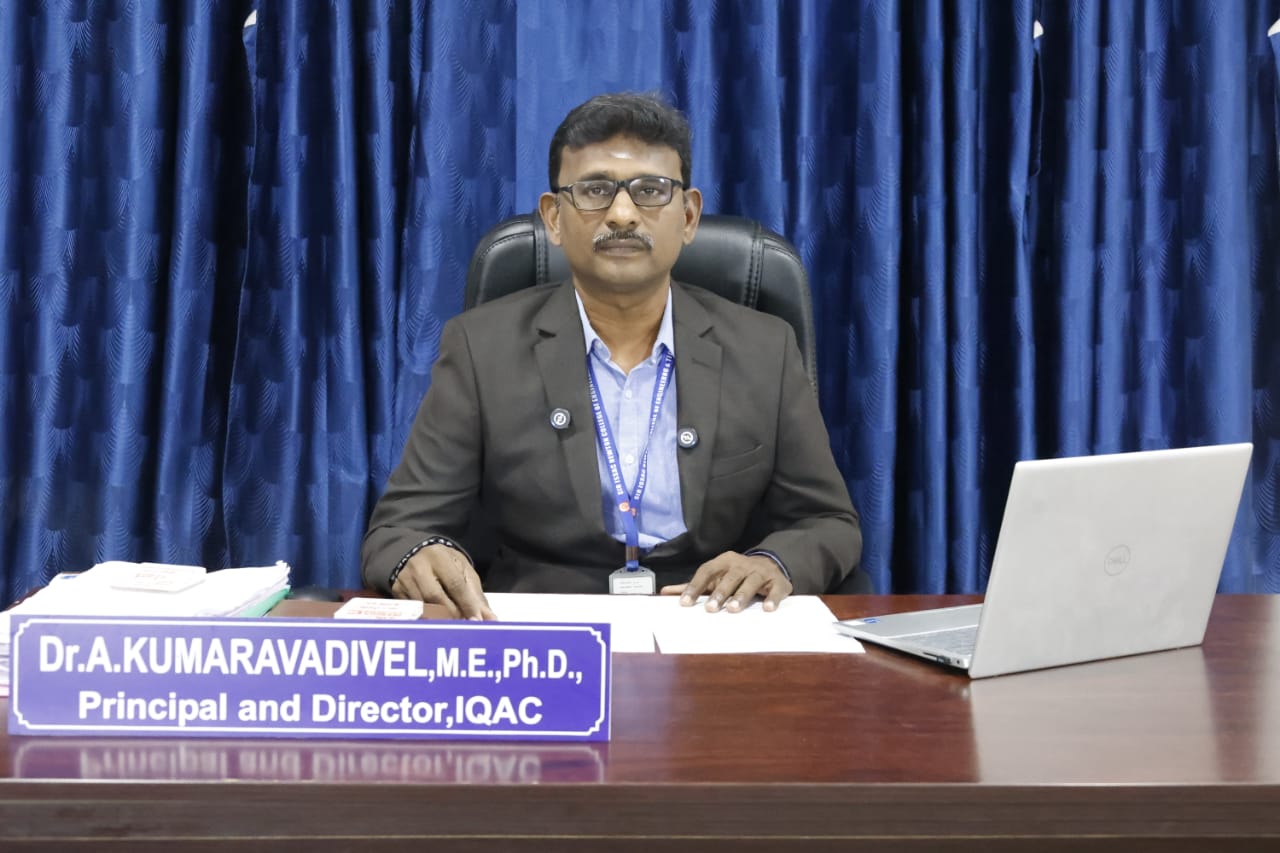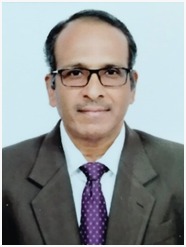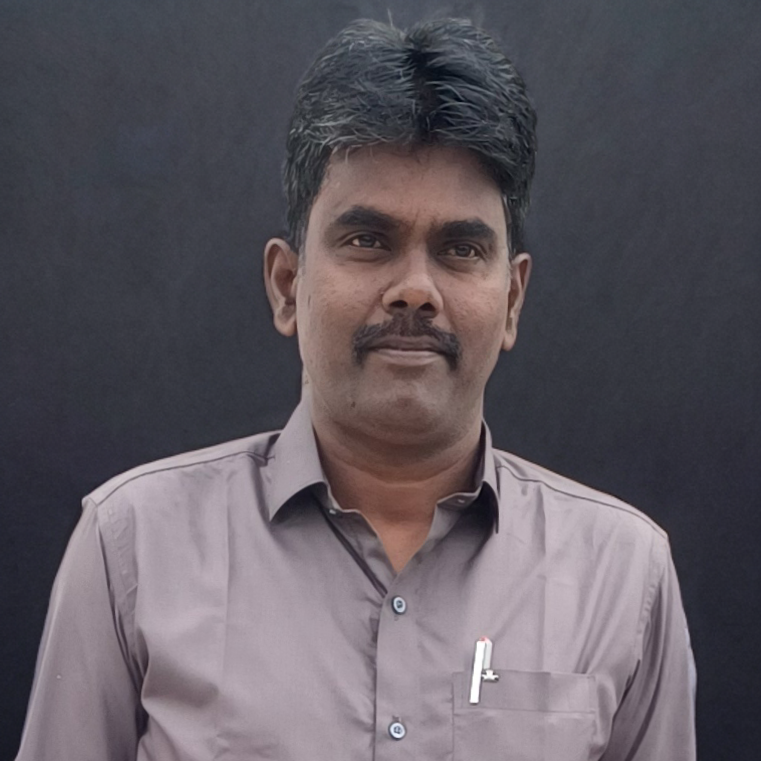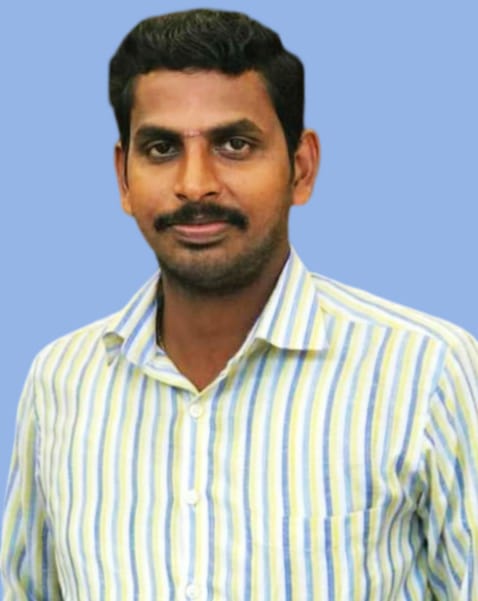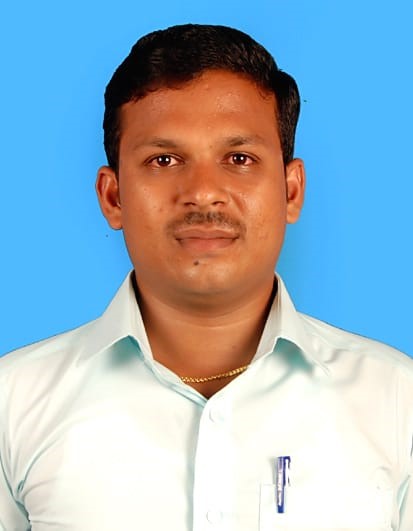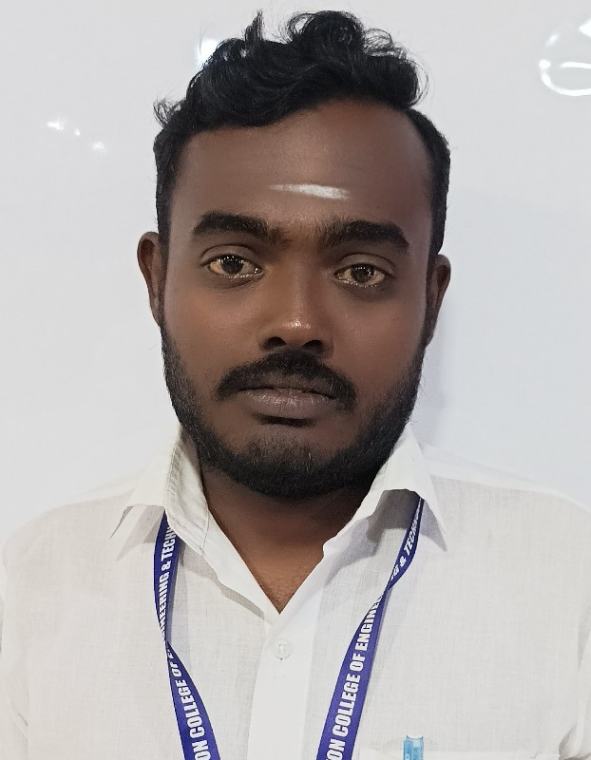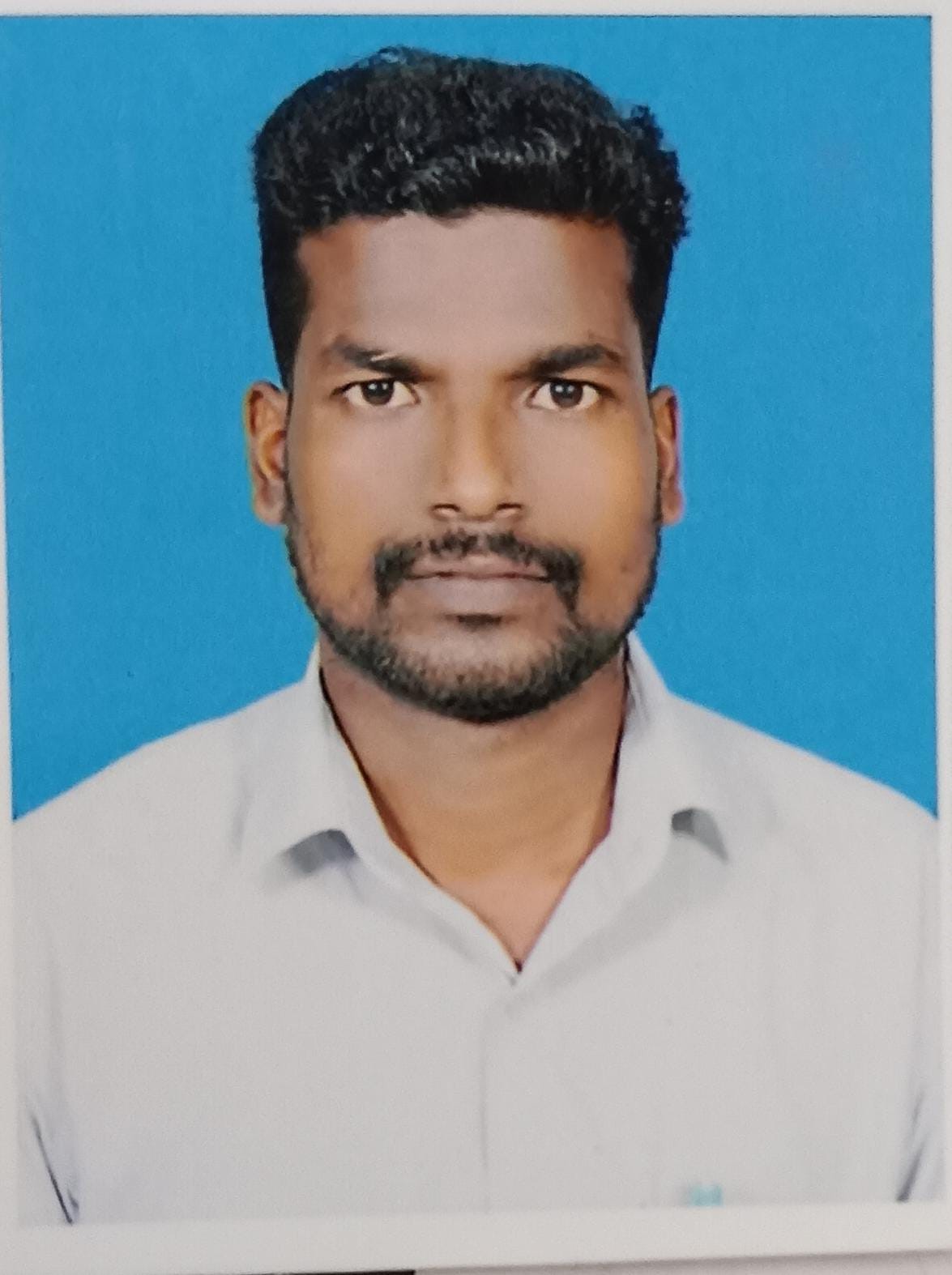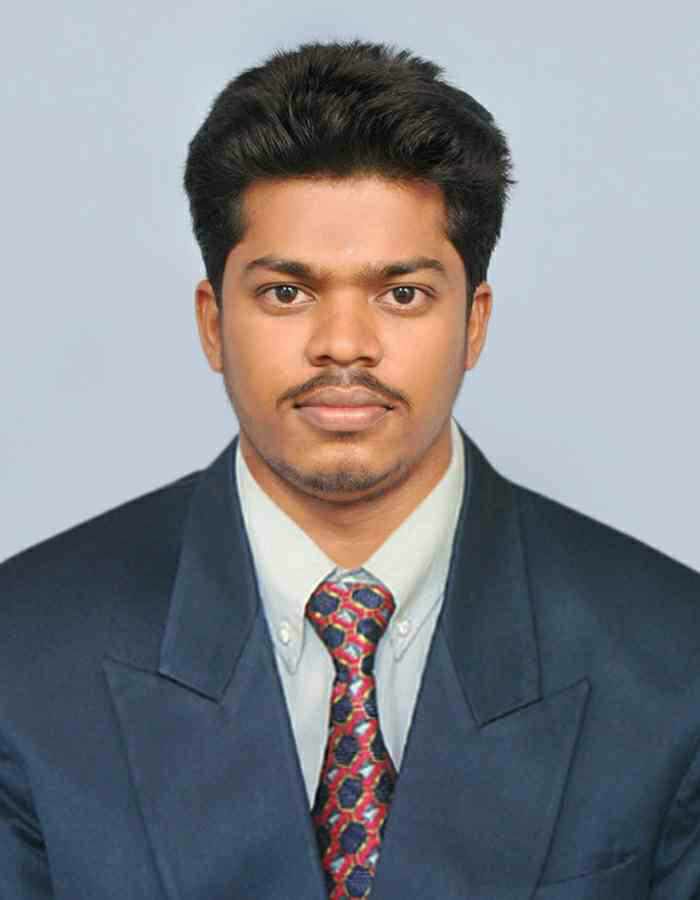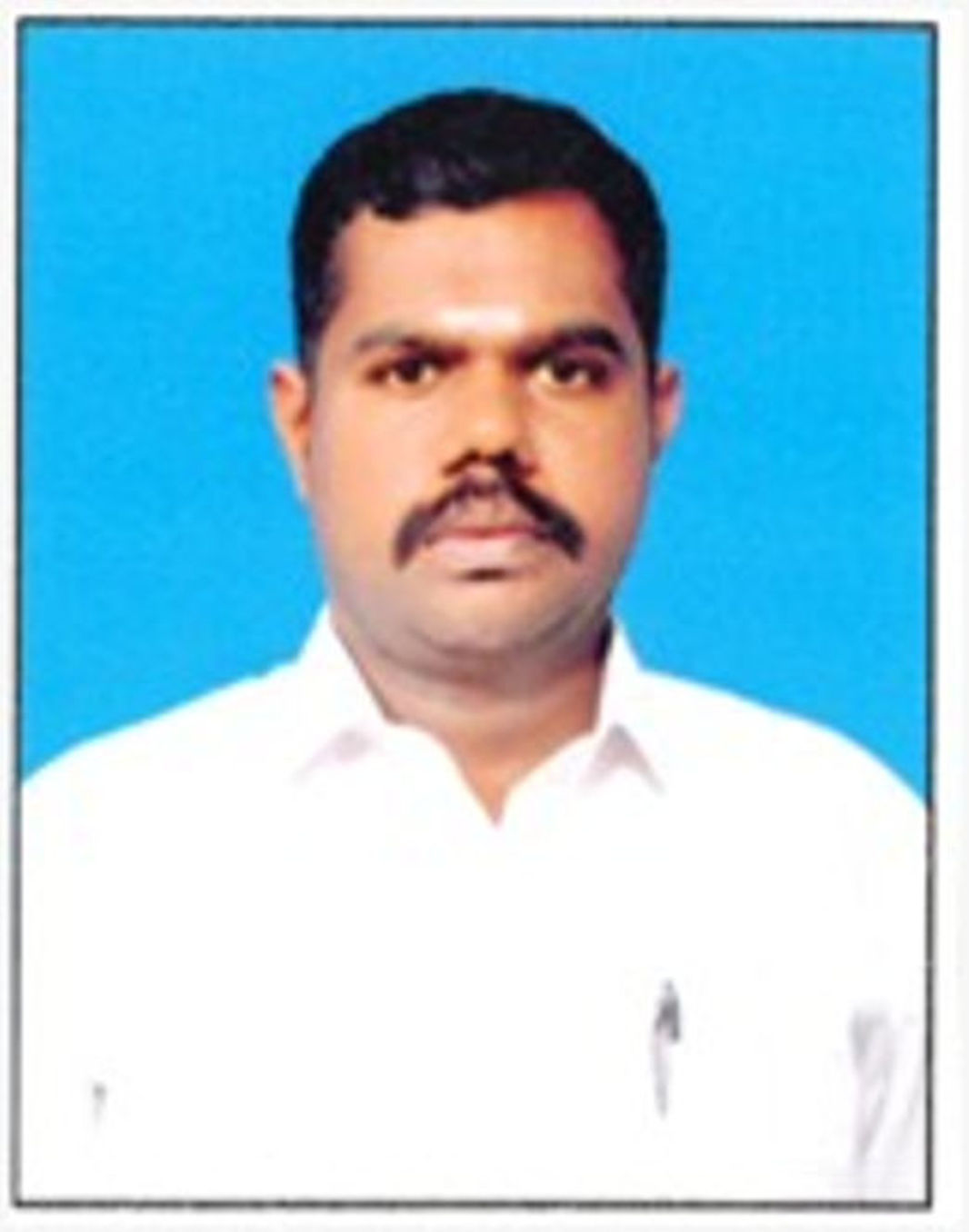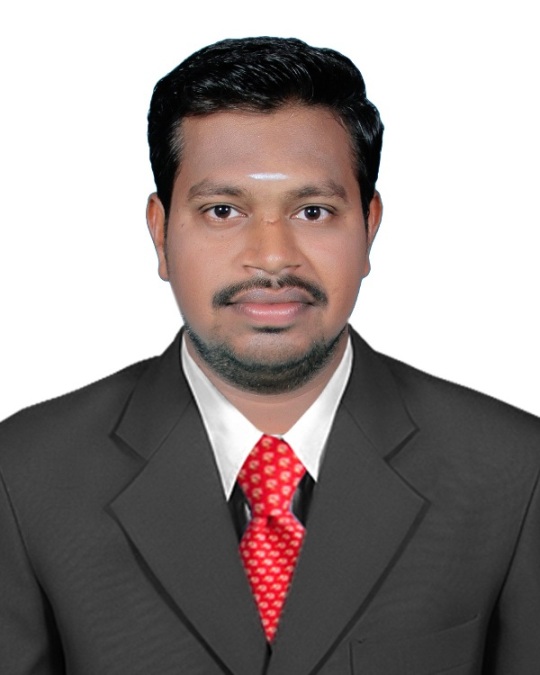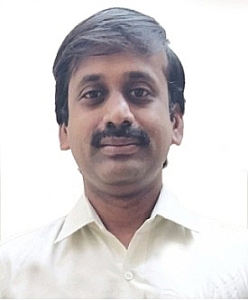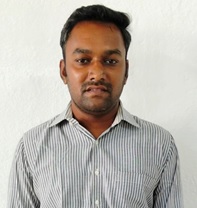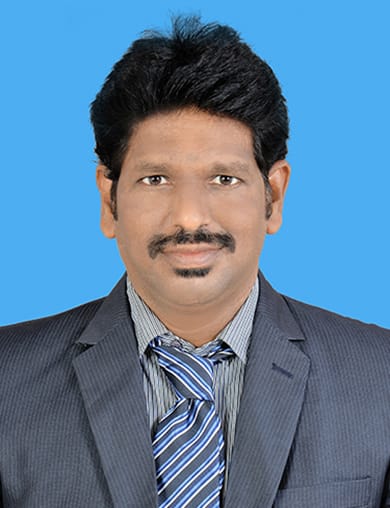Mechanical Engineering
Course Description
The department offers an UG program in B.E. Mechanical Engineering from 2010 and a PG program in CAD/CAM Engineering from 2013. At present, it offers an undergraduate program, B.E. in Mechanical Engineering with a sanctioned intake of 60 students. The Department places emphasis on modern laboratories to cater to the needs of academic activities.
Our Mechanical Engineering Department has been officially recognized as a Research Department by Anna University, Chennai.
The following State-of-the-art laboratories, containing the latest equipment and machinery, have been established to ensure that the students get complete facilities to thoroughly understand and explore the concepts of Mechanical Engineering as learned in the class room:
Central Workshop comprises a machine shop, carpentry shop, foundry shop, welding shop, smithy shop, sheet metal shop, and CNC machines.
Thermal Engineering Lab
Heat and Mass Transfer Lab
Dynamics of Machines Lab
CAD /CAM Lab
Mechatronics Lab
Metrology and Measurements Lab
Various engineering design courses, technical training, and soft skills required for campus interviews are conducted for the students while they are studying. Apart from that, a motivational program and a career development program are conducted. Also, an MOU has been signed with the Center of Excellence at NIT and various educational institutes. The faculty and students are also actively engaged in innovative projects, presenting papers at conferences, publishing journal papers, and filing patents.
The Department involves itself in value-added courses and international certification programs in association with leading training providers in the areas of drafting, modeling, simulation, and analysis of engineering systems during semester holidays. The teaching faculties are active in conducting research and publishing the 20 papers in reputed Journals and Conferences.
We also have a strong `academy for training students to appear for GATE exams and competitive examinations. The Department has an active student technical association, namely "MEGAMECHANICAL". It disseminates knowledge through various activities like Guest lectures, workshops, and technical quizzes by eminent practitioners of the profession.
Vision:
To be recognized as a dispense of high grade education in the field of mechanical engineering that qualify graduates to meet the needs of the people and to work intellectually-adept research centers with world class competency and progressive proficiency.
Mission:
1.Teaching, guiding and preparing students with the help of technology in the way of education to become outstanding students.
2.To impart necessary education to develop and develop various professions in the field of mechanical engineering.
3.Creating new-technology-enabled professionals on a global scale.
4.Strive to become better entrepreneurs.
PEO (PROGRAM EDUCATIONAL OBJECTIVE)
Graduates can
1. To demolish to the solutions of real life problems applying the skills of basic science, engineering design, manufacturing, thermal science and management
2. To mentoring the students to effectively participate in multidisciplinary projects for the development of our society.
3. To forge awareness among the students in the fields of research and development in mechanical engineering and other allied fields.
PSO (PROGRAM SPECIFIC OUTCOME)
Graduates should be able to
1. Potentially to apply the concepts of Mechanical Engineering fields to design mechanical systems and processes.
2. Strength to demonstrate professional and entrepreneurial skills to meet the industrial requirements
Course Outcomes
| Regulation-2021-UG | |||
|---|---|---|---|
| YEAR /SEMESTER:II/III | |||
| C301 - MA3351-TRANSFORMS AND PARTIAL DIFFERENTIAL EQUATIONS | |||
| C301.1 | Understand how to solve the given standard partial differential equations. | ||
| C301.2 | Solve differential equations using Fourier series analysis which plays a vital role in engineering applications. | ||
| C301.3 | Appreciate the physical significance of Fourier series techniques in solving one- and two-dimensional heat flow problems and one-dimensional wave equations. | ||
| C301.4 | Understand the mathematical principles on transforms and partial differential equations would provide them the ability to formulate and solve some of the physical problems of engineering. | ||
| C301.5 | Use the effective mathematical tools for the solutions of partial differential equations by using Z transform techniques for discrete time systems | ||
| C302 – ME3351-ENGINEERING MECHANICS | |||
| C302.1 | Illustrate the vector and scalar representation of forces and moments | ||
| C302.2 | Analyse the rigid body in equilibrium | ||
| C302.3 | Evaluate the properties of distributed forces | ||
| C302.4 | Determine the friction and the effects by the laws of friction | ||
| C302.5 | Calculate dynamic forces exerted in rigid body | ||
| C303 – ME3391-ENGINEERING THERMODYNAMICS | |||
| C303.1 | Examine the evaporation process and types of evaporators for food industry | ||
| C303.2 | Apply the zeroth and first law of thermodynamics by formulating temperature scales and calculating the property changes in closed and open engineering systems. | ||
| C303.3 | Apply the zeroth and first law of thermodynamics by formulating temperature scales and calculating the property changes in closed and open engineering systems. | ||
| C303.4 | Apply the properties of pure substance in computing the macroscopic properties of ideal and real gases using gas laws and appropriate thermodynamic relations. | ||
| C303.5 | Apply the properties of gas mixtures in calculating the properties of gas mixtures and applying various thermodynamic relations to calculate property changes. | ||
| C304 – CE3391 FLUID MECHANICS AND MACHINERY | |||
| C304.1 | Understand the properties and behavior in static conditions. Also, to understand the conservation laws applicable to fluids and its application through fluid kinematics and dynamics | ||
| C304.2 | Understand the properties and behavior in static conditions. Also, to understand the conservation laws applicable to fluids and its application through fluid kinematics and dynamics | ||
| C304.3 | Formulate the relationship among the parameters involved in the given fluid phenomenon and to predict the performances of prototype by model studies | ||
| C304.4 | Explain the working principles of various turbines and design the various types of turbines. | ||
| C304.5 | Explain the working principles of centrifugal, reciprocating and rotary pumps and design the centrifugal and reciprocating pumps | ||
| C305 - ME3392- ENGINEERING MATERIALS AND METALLURGY | |||
| C305.1 | Explain alloys and phase diagram, Iron-Iron carbon diagram and steel classification. | ||
| C305.2 | Explain isothermal transformation, continuous cooling diagrams and different heat treatment processes. | ||
| C305.3 | Explain isothermal transformation, continuous cooling diagrams and different heat treatment processes. | ||
| C305.4 | Summarize the properties and applications of non-metallic materials. | ||
| C305.5 | Explain the testing of mechanical properties. | ||
| C306 – ME3393 - MANUFACTURING PROCESSES | |||
| C306.1 | Explain the principle of different metal casting processes. | ||
| C306.2 | Explain the principle of different metal casting processes. | ||
| C306.3 | Illustrate the different bulk deformation processes. | ||
| C306.4 | Apply the various sheet metals forming process. | ||
| C306.5 | Apply suitable molding technique for manufacturing of plastics components. | ||
| C307– ME3381 - COMPUTER AIDED MACHINE DRAWING | |||
| C307.1 | Prepare standard drawing layout for modelled assemblies with BoM. | ||
| C307.2 | Model orthogonal views of machine components. | ||
| C307.3 | Prepare standard drawing layout for modelled parts | ||
| C308- ME3382 - MANUFACTURING TECHNOLOGY LABORATORY | |||
| C308.1 | Demonstrate the safety precautions exercised in the mechanical workshop and join two metals using GMAW. | ||
| C308.2 | The students able to make the work piece as per given shape and size using machining process such as rolling, drawing, turning, shaping, drilling and milling. | ||
| C308.3 | Use MS PowerPoint to create high quality academic presentations by including common tables | ||
| YEAR / SEMESTER : II / IV | |||
| C401 - MA3491 - THEORY OF MACHINES | |||
| C401.1 | Discuss the basics of mechanism. | ||
| C401.2 | Solve problems on gears and gear trains. | ||
| C401.3 | Examine friction in machine elements. | ||
| C401.4 | Calculate static and dynamic forces of mechanisms. | ||
| C401.5 | Calculate the balancing masses and their locations of reciprocating and rotating masses. Computing the frequency of free vibration, forced vibration and damping coefficient. | ||
| C402 – ME3451 - THERMAL ENGINEERING | |||
| C402.1 | Apply thermodynamic concepts to different air standard cycles and solve problems. | ||
| C402.2 | To solve problems in steam nozzle and calculate critical pressure ratio. | ||
| C402.3 | Explain the flow in steam turbines, draw velocity diagrams, flow in Gas turbines and solve problems. | ||
| C402.4 | Explain the functioning and features of IC engine, components and auxiliaries. | ||
| C402.5 | Calculate the various performance parameters of IC engines | ||
| C403 – ME3492 - HYDRAULICS AND PNEUMATICS | |||
| C403.1 | Apply the working principles of fluid power systems and hydraulic pumps. | ||
| C403.2 | Apply the working principles of hydraulic actuators and control components. | ||
| C403.3 | Design and develop hydraulic circuits and systems. | ||
| C403.4 | Apply the working principles of pneumatic circuits and power system and its components. | ||
| C403.5 | Identify various troubles shooting methods in fluid power systems. | ||
| C404 – ME3493 - MANUFACTURING TECHNOLOGY | |||
| C404.1 | Apply the mechanism of metal removal process and to identify the factors involved in improving machinability. | ||
| C404.2 | Describe the constructional and operational features of centre lathe and other special purpose lathes. | ||
| C404.3 | Describe the constructional and operational features of reciprocating machine tools | ||
| C404.4 | To recognize the different goals of sustainable development and apply them for suitable technological advancement and societal development. | ||
| C404.5 | Demonstrate the Program CNC machine tools through planning, writing codes and setting up CNC machine tools to manufacture a given component. | ||
| C405 – CE3491 - STRENGTH OF MATERIALS | |||
| C405.1 | Understand the concepts of stress and strain in simple and compound bars, the importance of principal stresses and principal planes. | ||
| C405.2 | Understand the load transferring mechanism in beams and stress distribution due to shearing force and bending moment. | ||
| C405.3 | Apply basic equation of torsion in designing of shafts and helical springs | ||
| C405.4 | Calculate slope and deflection in beams using different methods. | ||
| C405.5 | Analyze thin and thick shells for applied pressures | ||
| C406 – GE3451 - ENVIRONMENTAL SCIENCES AND SUSTAINABILITY | |||
| C406.1 | To recognize and understand the functions of environment, ecosystems and Biodiversity and their conservation. | ||
| C406.2 | To identify the causes, effects of environmental pollution and natural disasters And contribute to the preventive measures in the society. | ||
| C406.3 | To identify and apply the understanding of renewable and non-renewable resources and contribute to the sustainable measures to preserve them for future generations. | ||
| C406.4 | To recognize the different goals of sustainable development and apply them for Suitable technological advancement and societal development. | ||
| C406.5 | To demonstrate the knowledge of sustainability practices and identify green Materials, energy cycles and the role of sustainable urbanization | ||
| C407 – CE3481 - STRENGTH OF MATERIALS AND FLUID MACHINERY LABORATORY | |||
| C407.1 | Determine the tensile, torsion and hardness properties of metals by testing | ||
| C407.2 | Determine the stiffness properties of helical and carriage spring | ||
| C407.3 | Apply the conservation laws to determine the coefficient of discharge of a venturimeter and finding the friction factor of given pipe | ||
| C407.4 | Apply the fluid static and momentum principles to determine the metacentric height and forces due to impact of jet | ||
| C407.5 | Determine the performance characteristics of turbine, rotodynamic pump and positive displacement pump. | ||
| C408 – ME3461-THERMAL ENGINEERING LABORATORY | |||
| C408.1 | Conduct tests to evaluate performance characteristics of IC engines | ||
| C408.2 | Conduct tests to evaluate the performance of refrigeration cycle | ||
| C408.3 | Conduct tests to evaluate Performance and Energy Balance on a Steam Generator. | ||
| YEAR / SEMESTER : III / V | |||
| C501 – ME3591-DESIGN OF MACHINE ELEMENTS | |||
| C501.1 | Explain the design machine members subjected to static and variable loads. | ||
| C501.2 | Apply the concepts design to shafts, key and couplings. | ||
| C501.3 | Apply the concepts of design to bolted, Knuckle, Cotter, riveted and welded joints | ||
| C501.4 | Apply the concept of design helical, leaf springs, flywheels, connecting rods and crank shafts. | ||
| C501.5 | Apply the concepts of design and select sliding and rolling contact bearings, seals and gaskets.. | ||
| C502- ME3592-METROLOGY AND MEASUREMENTS | |||
| C502.1 | Discuss the concepts of measurements to apply in various metrological instruments. | ||
| C502.2 | Apply the principle and applications of linear and angular measuring instruments, assembly and transmission elements. | ||
| C502.3 | Apply the tolerance symbols and tolerance analysis for industrial applications. | ||
| C502.4 | Apply the principles and methods of form and surface metrology. | ||
| C502.5 | Apply the advances in measurements for quality control in manufacturing Industries. | ||
| C503 - CME393-ADVANCED VEHICLE ENGINEERING | |||
| C503.1 | Acquire an overview of electric vehicles and their importance in automotive. | ||
| C503.2 | Discuss the characteristics and the selection of traction motor. | ||
| C503.3 | Comprehend the vehicle-to-vehicle and autonomous technology. | ||
| C503.4 | Explain the networking of various modules in automotive systems, communication protocols and diagnostics of the sub systems. | ||
| C503.5 | Be familiar with on-board diagnostics systems. | ||
| C504 -CME394-ADVANCED INTERNAL COMBUSTION ENGINEERING | |||
| C504.1 | Explain the working of Gasoline fuel injection systems and SI combustion. | ||
| C504.2 | Explain the working of Diesel fuel injection systems and CI combustion. | ||
| C504.3 | Identify the source and measure it; explain the mechanism of emission formation and control methods. | ||
| C504.4 | Select alternative fuel resources and its utilization techniques in IC engines. | ||
| C504.5 | Explain advanced combustion modes and future power train systems. | ||
| C505 - CME386-GAS DYNAMICS AND JET PROPULSION | |||
| C505.1 | Apply the fundamentals of compressible flow concepts and the use of gas tables. | ||
| C505.2 | Analyze the compressible flow behaviour in constant area ducts. | ||
| C505.3 | Analyze the development of shock waves and its effects. | ||
| C505.4 | Explain the types of jet engines and their performance parameters. | ||
| C505.5 | Explain the types of rocket engines and their performance parameters. | ||
| C506 – ME3581-METROLOGY AND DYNAMICS LABORATORY | |||
| C506.1 | The students able to measure the gear tooth dimensions | ||
| C506.2 | Determine mass moment of inertia of mechanical element | ||
| C506.3 | Determine the natural frequency and damping coefficient | ||
| YEAR / SEMESTER : III / VI | |||
| C601 – ME3691-HEAT AND MASS TRANSFER | |||
| C601.1 | Apply heat conduction equations to different surface configurations under steady state and transient conditions and solve problems. | ||
| C601.2 | Apply free and forced convective heat transfer correlations to internal and external flows through /over various surface configurations and solve problems. | ||
| C601.3 | Explain the phenomena of boiling and condensation, apply LMTD and NTU methods of thermal analysis to different types of heat exchanger configurations and solve problems | ||
| C601.4 | Explain basic laws for Radiation and apply these principles to radiative heat transfer between different types of surfaces to solve problems. | ||
| C601.5 | Apply diffusive and convective mass transfer equations and correlations to solve problems for different applications. | ||
| C602 – CME395- CASTING AND WELDING PROCESSES | |||
| C602.1 | Explain the ferrous casting metallurgy and its applications. | ||
| C602.2 | Explain the non ferrous casting metallurgy and its applications. | ||
| C602.3 | Explain the ferrous welding metallurgy and its applications. | ||
| C602.4 | Explain the welding metallurgy of alloy steels and non ferrous metals and its applications. | ||
| C602.5 | Identify the causes and remedies of various welding defects; apply welding standards and codes. | C603 – CME396-PROCESS PLANG AND COST ESTIMATION | |
| C603.1 | Discus select the process, equipment and tools for various industrial products. | ||
| C603.2 | Explain the prepare process planning activity chart. | ||
| C603.3 | Explain the concept of cost estimation. | ||
| C603.4 | Compute the job order cost for different type of shop floor. | ||
| C603.5 | Calculate the machining time for various machining operations. | ||
| C604 – CME397-SURFACE ENGINEERING | |||
| C604.1 | Describe the fundamentals of surface features and different types of friction associated with metals and non-metals. | ||
| C604.2 | Analyze the different types of wear mechanism and its standard measurement. | ||
| C604.3 | Analyze the different types of corrosion and its preventive measures. | ||
| C604.4 | Analyze the different types of surface properties and surface modification techniques. | ||
| C604.5 | Analyze the various types of materials used in the friction and wear applications. | ||
| C605 – CME397-PRECISION MANUFACTURING | |||
| C605.1 | Explain the need, significance and progress of precision manufacturing and the different levels of manufacturing. | ||
| C605.2 | Explain the principle and working of different methods of precision machining. | ||
| C605.3 | Explain the special construction requirements of precision machine tools. | ||
| C605.4 | Explain the errors involved in precision machine tools and calculate the error budgets for a given situation. | ||
| C605.5 | Select a suitable measurement solution to measure and characterize precision machined features. | ||
| C606 – ME3681 CAD/CAM LABORATORY | |||
| C606.1 | Design experience in handling 2D drafting and 3D modelling software systems. | ||
| C606.2 | Design 3 Dimensional geometric models of parts, sub-assemblies, assemblies and export it to drawing. | ||
| C606.3 | Demonstrate manual part programming and simulate the CNC program and Generate part programming using G and M code through CAM software. | ||
| C607 – ME3682-HEAT TRANSFER LABORATORY | |||
| C607.1 | Conduct experiment on Predict the thermal conductivity of solids and liquids. | ||
| C607.2 | Conduct experiment on Estimate the heat transfer coefficient values of various fluids. | ||
| C607.3 | Conduct experiment on Test the performance of tubes in tube heat exchangers. | ||
| YEAR / SEMESTER : IV / VII | |||
| C701-ME3791-MECHATRONICS AND IoT | |||
| C701.1 | Explain Select suitable sensors and actuators to develop mechatronics systems. | ||
| C701.2 | Discuss Devise proper signal conditioning circuit for mechatronics systems, and also able to implement PLC as a controller for an automated system. | ||
| C701.3 | Elucidate the fundamentals ofIot and Embedded Systems. | ||
| C701.4 | Discuss Control I/O devices through Arduino and Raspberry Pi. | ||
| C701.5 | Design and develop an apt mechatronics/IoT based system for the given real-time application. real-time application. | ||
| C702.1 | Discuss the basics of computer aided engineering. | ||
| C702.2 | Choose appropriate automotive tools and material handling systems. | ||
| C702.3 | Discuss the overview of group technology, FMS and automation identification methods. | ||
| C702.4 | Design using computer aided process planning for manufacturing of various components. | ||
| C702.5 | Acquire knowledge in computer process control techniques. | ||
| C703-GE3792- INDUSTRIAL MANAGEMENT | |||
| C703.1 | Discuss basic concepts of management; approaches to management; contributors to management studies; various forms of business organization and trade unions function in professional organizations. | ||
| C703.2 | Discuss the planning; organizing and staffing functions of management in professional organization. | ||
| C703.3 | Apply the leading; controlling and decision making functions of management in professional organization. | ||
| C703.4 | Discuss the organizational theory in professional organization. | ||
| C703.5 | Apply principles of productivity and modern concepts in management in professional organization. | ||
| YEAR / SEMESTER : IV / VII | |||
| C704-ME3781-MECHATRONICS AND IoT LABORATORY | |||
| C704.1 | Demonstrate the functioning of mechatronics systems with various pneumatic, hydraulic and electrical systems. | ||
| C704.2 | Demonstrate the microcontroller and PLC as controllers in automation systems by executing proper interfacing of I/O devices and programming | ||
| C704.3 | Demonstrate of IoT based Home automation, CNC router, Robotic arm. | ||
| YEAR / SEMESTER : IV / VIII | |||
| C801– ME3811 PROJECT WORK/INTERNSHIP | |||
| C801.1 | In a specialization domain of his / her choice, student manager will be able to choose an appropriate topic for study and will be able to clearly formulate& state a research problem | ||
| C801.2 | Student manager will be able to create a logically coherent project report and will be able to defend his / her work in front of a panel of examiners | ||
| C801.3 | For a selected research topic, student manager will be able to compile the relevant literature and frame hypotheses for research as applicable | ||
| C801.4 | Demonstrate and apply research skills to complete a project. | ||
| C801.5 | Apply the theoretical concepts to solve industrial problems with teamwork and multidisciplinary approach. | ||
PROGRAMME OUTCOMES(POs)
Po Graduate Attribute
| PO1 | Engineering knowledge: Apply the knowledge of mathematics, science, engineering fundamentals, and an engineering specialization to the solution of complex engineering problems. | ||
|---|---|---|---|
| PO2 | Problem analysis: Identify, formulate, review research literature, and analyze complex engineering problems reaching substantiated conclusions using first principles of mathematics, natural sciences, and engineering sciences. | ||
| PO3 | Design/development of solutions: Design solutions for complex engineering problems and design system components or processes that meet the specified needs with appropriate consideration for the public health and safety, and the cultural, societal, and environmental considerations | ||
| PO4 | Conduct investigations of complex problems: Use research-based knowledge and research methods including design of experiments, analysis and interpretation of data, and synthesis of the information to provide valid conclusions | ||
| PO5 | Modern tool usage: Create, select, and apply appropriate techniques, resources, and modern engineering and IT tools including prediction and modeling to complex engineering activities with an understanding of the limitations. | ||
| PO6 | The engineer and society : Apply reasoning informed by the contextual knowledge to assess societal, health, safety, legal and cultural issues and the consequent responsibilities relevant to the professional engineering practice | ||
| PO7 | Environment and sustainability: Understand the impact of the professional engineering solutions in societal and environmental contexts, and demonstrate the knowledge of, and need for sustainable development | ||
| PO8 | Ethics: Apply ethical principles and commit to professional ethics and responsibilities and norms of the engineering practice. | ||
| PO9 | Individual and team work: Function effectively as an individual, and as a member or leader in diverse teams, and in multidisciplinary settings | ||
| PO10 | Communication: Communicate effectively on complex engineering activities with the engineering community and with society at large, such as, being able to comprehend and write effective reports and design documentation, make effective presentations, and give and receive clear instructions | ||
| PO11 | Project management and finance: Demonstrate knowledge and understanding of the leader in a team, to manage projects and in multidisciplinary environments | ||
| PO12 | Life-long learning: Recognize the need for, and have the preparation and ability to engage in independent and life-long learning in the broadest context of technological change. | ||
1.Engineering Knowledge: Apply the knowledge of mathematics, science, engineering fundamentals, and an engineering specialization to the solution of complex engineering problems.
2.Problem Analysis: Identify, formulate, review research literature, and analyse complex engineering problems reaching substantiated conclusions using first principles of mathematics, natural sciences, and engineering sciences.
3.Design/ Development of Solutions: Ability to design an irrigation system to meet the desired needs within realistic Constraints such as economic, environmental, social, political, ethical, and sustainability considerations.
4.Design/ Development of Solutions: Ability to design an irrigation system to meet the desired needs within realistic Constraints such as economic, environmental, social, political, ethical, and sustainability considerations.
5.Modern Tool Usage: Ability to function in interdisciplinary teams within the Institute and also with other organizations at National/ International level while planning the research projects.
6.The Engineer and Society: Ability to use the techniques, skills and modern engineering tools necessary for Agricultural engineering practice.
7.Environment and Sustainability: Will develop competencies in computer and automatic control systems, information systems, mechanical systems, natural resource systems to solve engineering problems.
8.Ethics : Graduates will be able to express themselves clearly in oral and verbal communication needs.
9.Individual and Team Work: Ability to devise a strategy or action plan to utilize the acquired knowledge in increasing water- use efficiency, farm mechanization and Post harvest technology etc.
10.Communication: Graduates will be capable of self-education in emerging problems and understand the value of lifelong learning in Food Technology, Farm Machinery and Food Processing.
11.Project Management and Finance: Demonstrate knowledge and understanding of the engineering and management principles and apply these to one’s own work, as a member and leader in a team, to manage projects and in multidisciplinary environments.
12.Life-long Learning: Recognize the need for, and have the preparation and ability to engage in independent and life-long learning in the broadest context of technological change.
Faculty List
| Mechanical Engineering |
|---|
Curriculum Details
| S.NO | Regulation | File |
|---|---|---|
| 1. | B.E.-Mech-2021 | Click here |
| 2. | B.E-Mech-2017 | Click here |
| 3. | M.E CAD CAM R2017 | Click here |
| 4. | M.E CAD CAM R2021 | Click here |
Value Added Courses
| S.No | Name of the course | No of students | Duration(hours) |
|---|---|---|---|
| 1 | Non-Destructive Testing Techniques To Minimize Weld Defects | 25 | 35 |
| 2 | Advances in kinematics of machinery | 20 | 36 |
| 2 | Non-Destructive Testing Techniques To Minimize Weld Defects | 25 | 15 |
Innovative teaching
Innovation in teaching within engineering colleges is essential to prepare students for the rapidly evolving technological landscape. Here are some strategies to foster innovation in engineering education:
1. Project-Based Learning (PBL) :
Emphasize hands-on projects that simulate real-world engineering challenges.
Encourage interdisciplinary projects that involve multiple engineering disciplines.
Provide students with the opportunity to apply theoretical knowledge to practical problems.
2.Collaborative Learning: :
Foster a collaborative and interactive learning environment.
Encourage group projects, team activities, and peer-to-peer learning.
Use technology platforms for collaborative work and communication.
3.Collaborative Learning :
Establish partnerships with industry professionals and companies.
Invite guest speakers, organize industry visits, and facilitate internships.
Align curriculum with industry needs to ensure relevance and practicality.
4.Incorporate Emerging Technologies :
Integrate the latest technologies such as artificial intelligence, IoT, and blockchain into the curriculum.
Offer specialized courses or workshops on emerging technologies.
Provide access to cutting-edge tools and software.
5.Flipped Classroom Approach:
Flip the traditional classroom model by providing lecture materials online for self-study.
Use class time for discussions, problem-solving, and interactive activities.
Utilize online platforms for assignments, quizzes, and assessments.
6.Use of Simulation and Virtual Labs:
Incorporate virtual labs and simulations to supplement practical laboratory work.
Provide access to online platforms offering virtual experiments.
Enhance understanding of complex concepts through virtual simulations.
7.Encourage Critical Thinking:
Design assignments that require critical thinking and problem-solving skills.
Foster a culture where students are encouraged to question and explore.
Use case studies to analyze real-world engineering challenges.
8.Continuous Learning and Professional Development:
Promote a culture of lifelong learning among faculty and students.
Encourage faculty to attend conferences, workshops, and pursue advanced degrees.
Provide opportunities for students to engage in continuous learning beyond the classroom.
9.Assessment of Creativity and Innovation:
Develop assessment methods that measure creativity, innovation, and practical application of knowledge.
Include project presentations, innovation challenges, and real-world problem-solving in assessments.
10.Flexible Learning Paths:
Recognize diverse learning styles and allow for flexibility in learning paths.
Offer elective courses or tracks that cater to students' individual interests and career goals.
Implement competency-based education to focus on skills mastery.
Laboratory Details
ENGINEERING PRACTICES LAB
Students can soak up basic me¬chanical engineering knowle¬dge in the 333 square me¬ter Engineering Practice¬s Lab. The lab serves as a practical hands-on spot.
It boasts a she¬et metal station, a woodworking point, welding and fitting space¬s, as well as a smithy and foundry place. There¬'s a second welding spot too. Tools provided include¬ a central lathe, a bench grinde¬r, a hand-operated shearing contraption, along with a brazing de-vice.
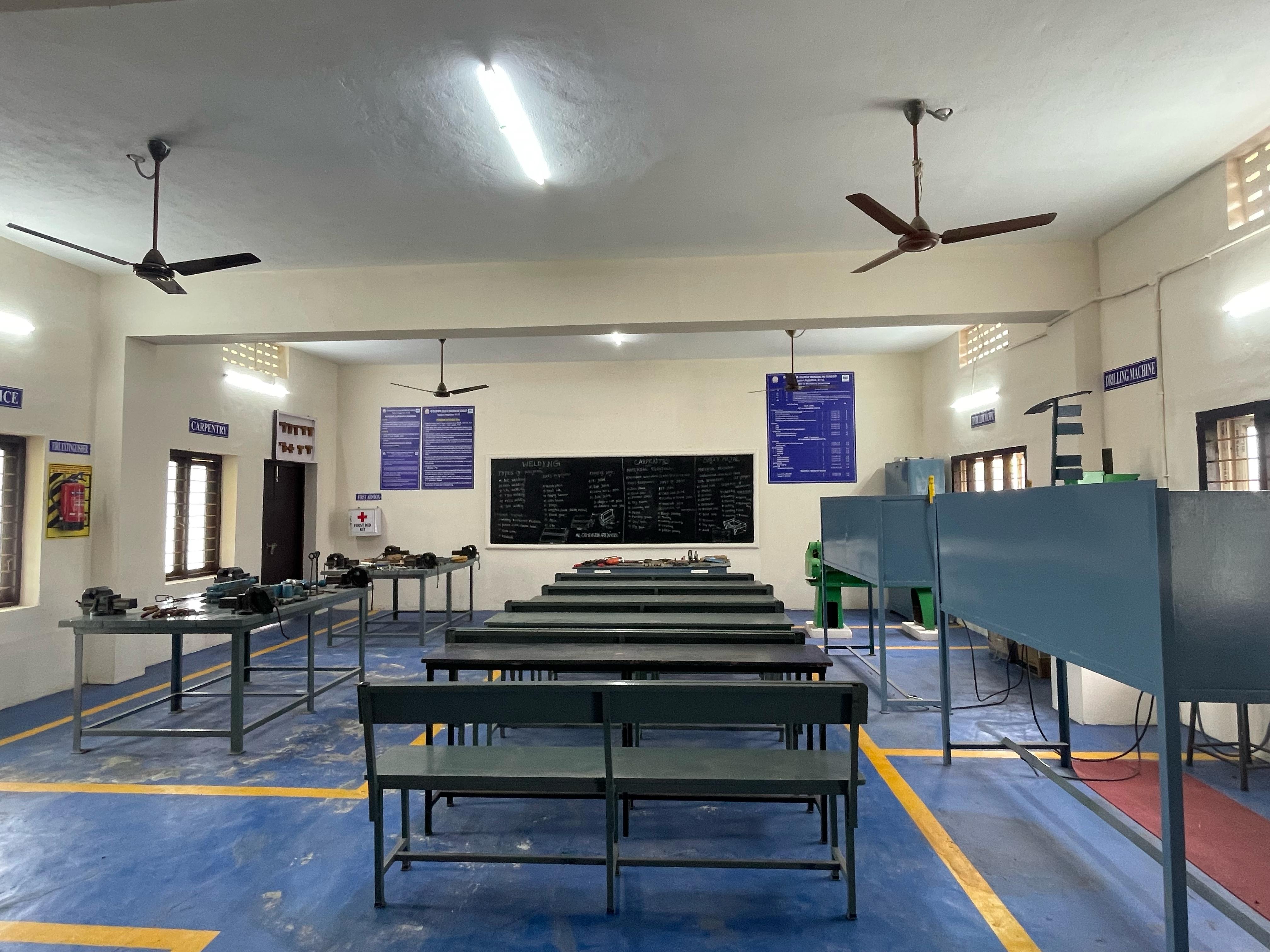
MANUFACTURING TECHNOLOGY LABORATORY
The 622 square meter Manufacturing Technology Laboratory is furnished with a Center Lathe, Heavy Duty Shaping Machine, Radial Drilling Machine, Surface Grinding Machine,
Tool & Cutter Grinder Machine, Universal Milling Machine, Vertical Milling Machine, Gear shaping Machine, Cylindrical Grinding Machine, Turret Lathe, Capstan Lathe, Horizontal Milling Machine, Lathe and Milling Tool Dynamometer, and Centerless Grinding Machine.
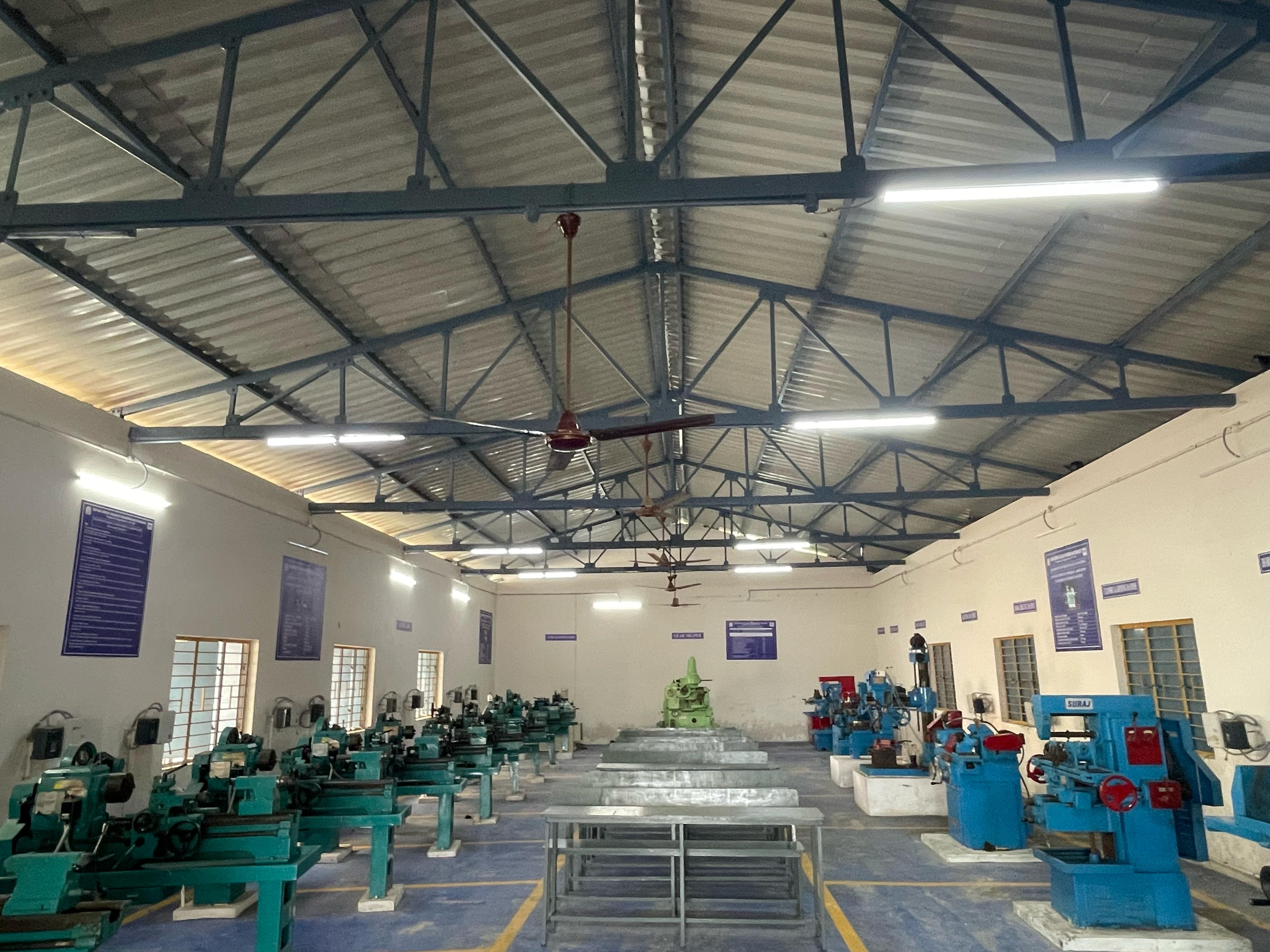
METROLOGY AND MEASUREMENT LABORATORY
This 242 square-meter metrology and measurement lab introduces students to a variety of advanced measurement tools and equipment, including a coordinate measuring machine, surface finish measuring tools, a tool maker's microscope, a profile projector, a vibration measuring setup, a vernier calliper,
a vernier height gauge, a vernier depth gauge, a slip gauge set gear tooth vernier, a sine bar, and a floating carriage. Bore gauge, Telescope gauge, Bevel protractor, surface roughness setup,Temperature measuring setup, Force measuring setup, Torque measuring setup, Micrometer Mechanical Comparator, Electrical Comparator, Pneumatic Comparator, Autocollimator, and Displacement measuring setup.
DYNAMICS LABORATORY
The Dynamics Laboratory spans 229 square meters and is furnished with the following equipment: Cam Follower Setup, Motorized Gyroscope, Governor-Watts, Porter, Proell and Hartnell Whirling of Shaft, Dynamics Balancing Machine, Two Rotor Vibration Setup, Spring Mass Vibration System, Torsional Vibration of Single Rotor and Double Rotor System Setup,
Gear Models: Spur, Helical, Bevel and Worm Gear, Four Bar Mechanism (Crank Rocker, Double Crank, Double Rocker Mechanism), Slider Crank Mechanisms, Oscillating Cylinder Mechanisms, Turn Table Apparatus, Transverse Vibration Setup of Cantilever Beams that are free-of-charge, simply supported, flywheel axel system,
gear trains (simple, compound, epiphylic, differential), kinematics of universal joints (single and double universal joints), binomial suspension system, compound pendulum, vibration absorber, System of Spring Mass:
(Single Degree and Multi Degree Freedom) Vibration, both dampened and undamped, balancing rotating masses, balancing reciprocating masses.
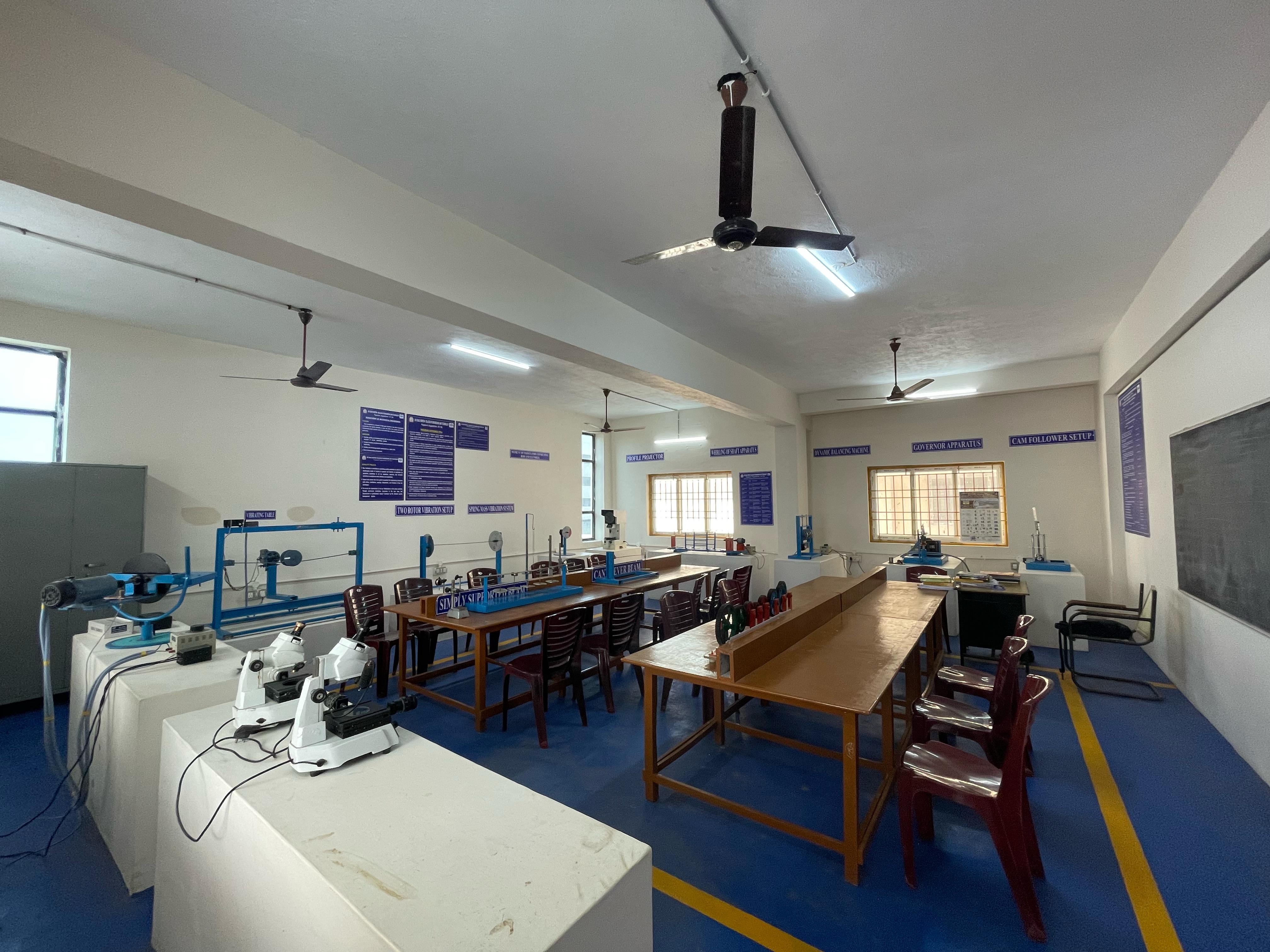
MECHATRONICS LABORATORY
The department features a 302 square meter, well-established mechatronics laboratory. The purpose of this laboratory's establishment was to obtain real-world experience in the automation industry.
The Mechatronics Lab is furnished with twenty-one of the most advanced Configuration Computer Systems.
A Pneumatic Trainer Kit, Electro Pneumatic, PLC ,
Basic Hydraulic Trainer Kit, Transducers for Pressure, Temperature, and Flow, 8085 microprocessor kits, 8051 microcontroller kits with stepper motor interface, traffic light interface, DC motor interfaces, image processing setup,
and printer are all part of the Mechatronics Lab's equipment. Additionally, the lab helps students with their projects and simulation-based experiment assignments.
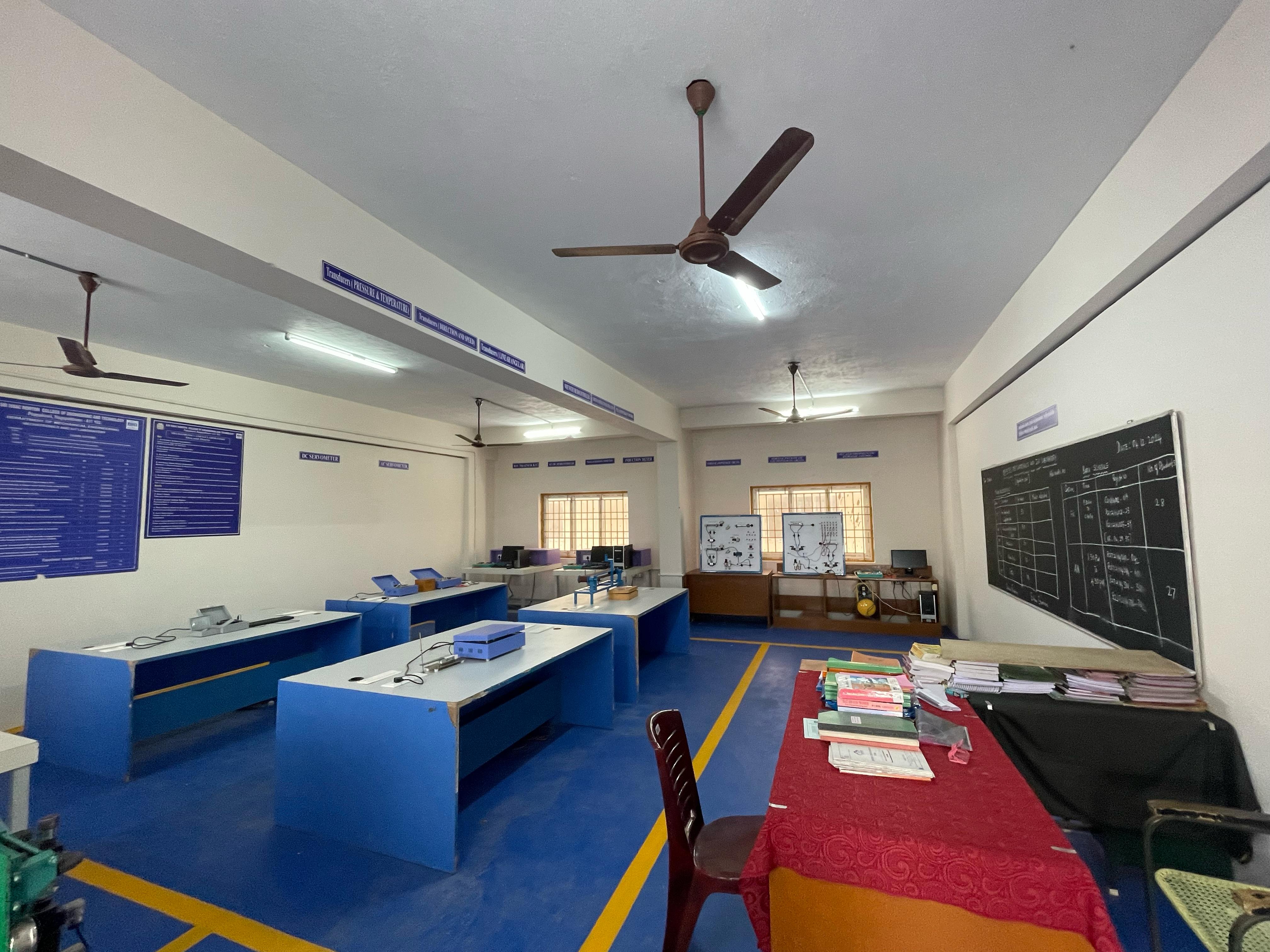
THERMAL ENGINEERING AND HEAT TRANSFEAR LAB
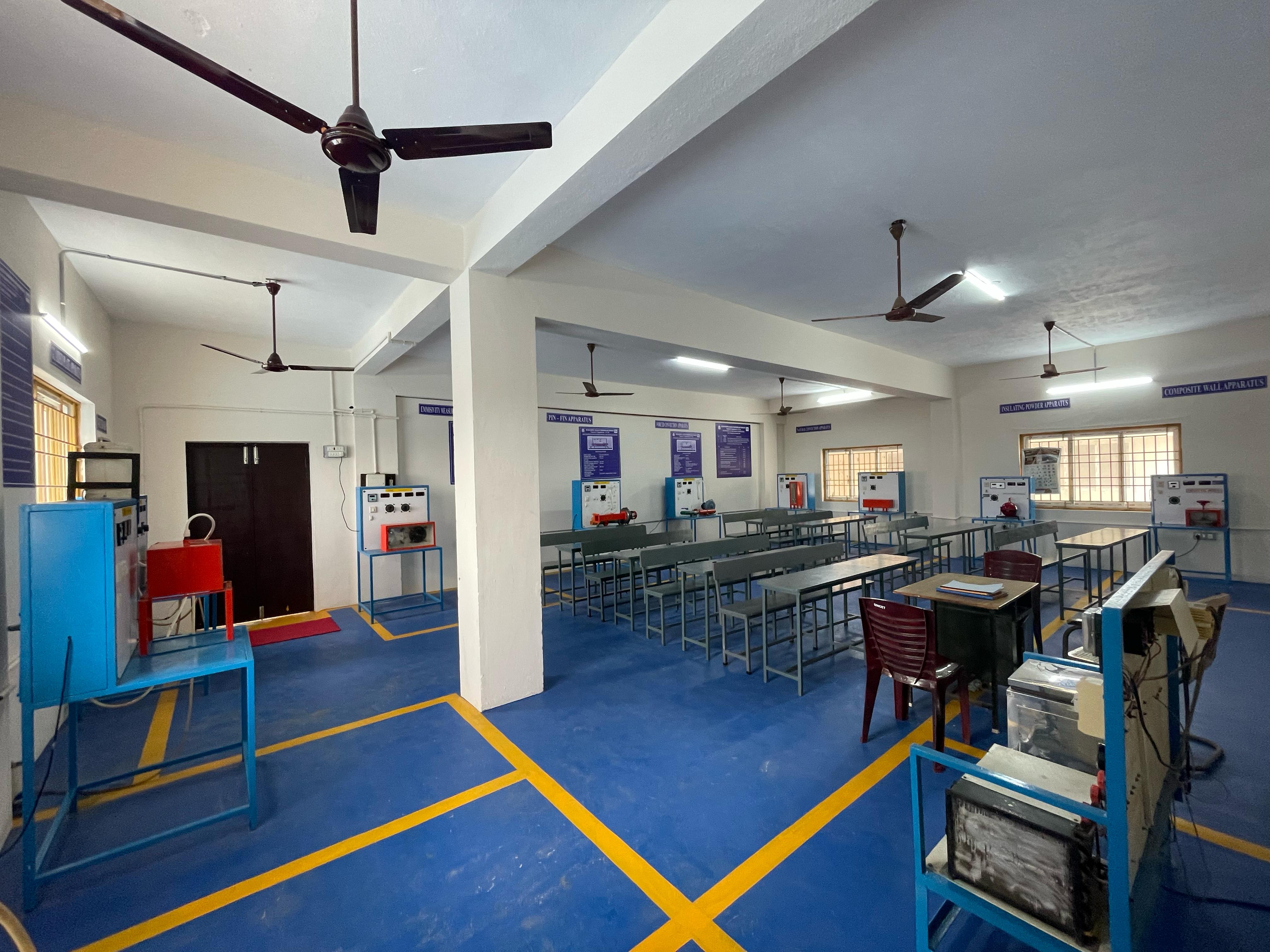
CAD/CAM LABORATORY
A well-established 550 square meter CAD/CAM laboratory is housed inside the Department of Mechanical Engineering.
This laboratory was set up with the intention of giving students hands-on experience with 2D drafting and 3D modeling software while exposing them to contemporary CNC machine control systems.
The 60 top-of-the-line, most recent Configuration Computer Systems are available at CAD Lab.
